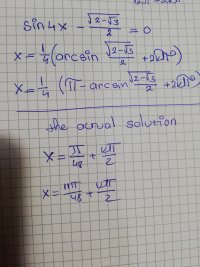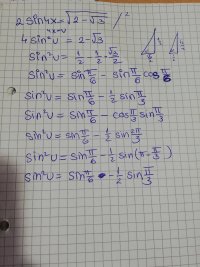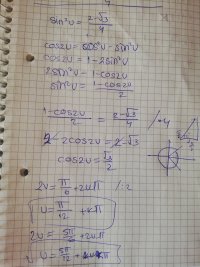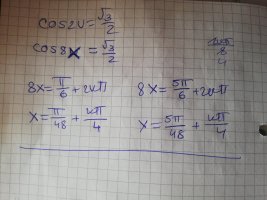Trigonometry
- Thread starter Loki123
- Start date
I made a mistake, I know why it's supposed to be 11Pi, but what about kPi/4 instead of kPi/2I got it, kinda. The only difference is I got kPi/4 instead of kPi/2 and 5Pi/48 instead of 11Pi/48View attachment 32943
View attachment 32945
blamocur
Elite Member
- Joined
- Oct 30, 2021
- Messages
- 3,205
I've made the same mistake of getting the period of 4kπ instead of 2kπ. The error arose when we squared the equation :I made a mistake, I know why it's supposed to be 11Pi, but what about kPi/4 instead of kPi/2
4sin2u=2−3 is not equivalent to 2sinu=2−3, but it is equivalent to ±(2−3). I.e., by squaring we've introduce additional "solutions" (there is a term for them, but I don't remember what it is).
D
Deleted member 4993
Guest
Extraneous solution!!(there is a term for them, but I don't remember what it is).
blamocur
Elite Member
- Joined
- Oct 30, 2021
- Messages
- 3,205
Thank you!Extraneous solution!!
Steven G
Elite Member
- Joined
- Dec 30, 2014
- Messages
- 14,591
I call it corner time.Extraneous solution!!
D
Deleted member 4993
Guest
Are you feeling lonely there - I am sitting here in the other corner - otis sent me here to keep you company....I call it corner time.




